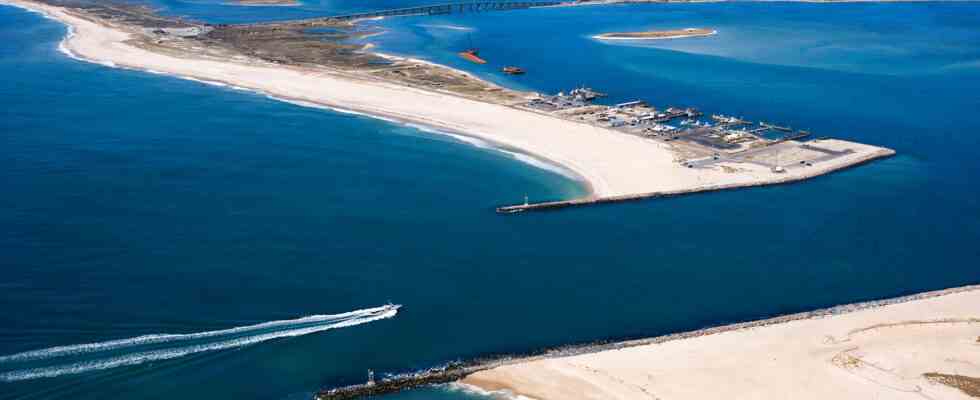Status: 12/15/2022 06:56 a.m
At the World Conservation Summit in Montreal, there is a lot of talk about conservation. Not far away, researchers and indigenous people have succeeded in renaturing a previously polluted bay – with the help of oysters.
Hardly a day goes by when Chris Paparo isn’t on the lookout for new sea creatures. The marine biologist grew up on Long Island near New York. “Before, we almost never saw whales,” says Chris, “we just didn’t have them. Today you can see humpback whales and dolphins on almost every beach in Long Island.” A sight that fills him with pride every time, because Chris is one of the researchers who worked on the renaturation project.
“The polluted water was our biggest challenge. Every year we had to deal with unhealthy algae in the bay,” recalls Ellen Pikitch, marine biologist and professor at the Stony Brook University. The sea in the 40 square kilometer bay had been fished empty. In addition, chemicals from the septic tanks of the residents would have ensured that plants and animals died. Purifying the water mechanically would have been far too expensive. That’s why the researchers turned to the power of nature.
Shells as saviors
A key to success was mussels. Students raised them in the lab and then released them into the bay. Protected areas have been designated so that they are not immediately fished away again. This was the only way the mussels could grow and thrive – and help the scientists.
“A single oyster filters up to 190 liters of water a day,” says Paparo, proudly showing a whole bundle of oysters on which new shells have been growing for a year. Each one has helped make Shinnecock a role model. “First it was the oysters, then came the seaweed, which became the habitat for small flounders, crabs and shrimp. And so sometimes all it takes is a small change to bring back biodiversity,” explains Paparo.
How species protection can work – an example from New York
Marion Schmickler, ARD New York, daily topics 10:45 p.m., December 7th, 2022
Learn from the indigenous people
Using nature to protect it – the researchers also learned this from the Shinnecocks. The tribe lives across the bay. Their area is easy to spot from afar: Villa after villa line the coast in the expensive Hamptons, each with its own jetty and protective walls against the waves. With the Shinnecocks, grass grows on the dunes, and large boulders lie in the water as breakwaters.
“We have an old tradition of doing business in harmony with nature,” says Shane Weeks, “but people are increasingly understanding that what they call progress is bad for us as a species and for the whole world.” The indigenous people have long relied on oyster beds to keep the water cleaner and protect the coast from storms. In the past, however, nobody was interested in how they treated nature, says the young man who, as the Shinnecocks’ ambassador, reports on their traditions around the world.
Biodiversity as an economic factor
“The Shinnecocks have known how to preserve biodiversity for hundreds of years,” says marine biologist Pikitch. They would have had a big part in the success on the bay. A success that pays off: The clean water attracts more tourists to Long Island, stimulates the local economy and gives the fishermen better catches.
An environmental organization recently named the bay a “Hope Spot”. Shinnecock is playing in the same league as the Galapagos Islands. “It’s great for our area,” says Paparo. Not only because the residents can now see whales and go fishing again. This also shows people elsewhere how important it is to bring back biodiversity. “We live here on the outskirts of New York, one of the largest metropolises in the world. And we have a huge population of shellfish. The fish are coming back, and so are the whales. That could show people all over the world: What we are here doing may seem small, but it helps the big picture.”

